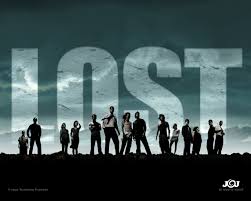
One of my favorite TV shows is LOST. I love almost every facet of the show. I love that the cast is very multi-cultural (very Next Evangelicalism). I love that questions are constantly being raised and not always being answered (very post-modern). I love that the development of the back story and character development is more central than simply moving the plot along (very good story telling). But most of all, I love that for the last year I have not seen a single episode at its regular time via broadcast television. Formerly at the whim and mercy of the networks, the advent of web streaming allows me to take back control and assert power over the medium of television.
Many decades ago, there were actually people who were confounded by the new medium known as television – a magic box that showed moving pictures. In recent years, there were many who were confounded by the advent of the internet. Some were so confounded that they thought they themselves had actually invented the internet. (I’m looking at you Al Gore). Any new technology creates uncertainty, but strangely it also creates opportunities for the redistribution of power.
Eric Law has written extensively on the topic of multi-cultural leadership. In his landmark work, The Wolf Shall Lie Down with the Lamb, Law asserts that one of the major obstacles to healthy cross-cultural leadership is the difference in how power is perceived by different ethno-cultural groups. These differences lead to an unequal distribution of power when different ethnic groups attempt to live church life together.
For example, Law finds that the high level of exclusively verbal communication that most Western and American cultures employ, leads to an unfair and imbalanced power dynamic. As Law explains, “most church leaders use verbal communication exclusively to conduct church affairs. . . .Verbal communication alone is a biased means of communication, favoring people who have a strong sense of individual power and verbal ability – the majority of whom are whites.” I can remember being in a number of multi-ethnic settings where whites dominated the conversation while many ethnic minorities are left out of the conversation. Verbal communication is assumed to be the most effective means of communication leading to an imbalanced power distribution.
Law continues by stating that: “in order to enable people of a multicultural community to communicate with each other, we must move beyond using verbal communication exclusively.” Law asserts that multi-media and group media provides a form of two-way communication that levels the playing field for effective cross-cultural communication. If media is used effectively and judiciously, we have the opportunity to correct imbalanced power distribution created by American evangelicalism’s cultural captivity.
On this website, we explore not only the meaning of justice in various forms but we must also explore the medium we employ to discuss justice. “Media, both print and electronic, have always been associated with power distribution.” The use of multi-media, group media, two-way communication, multi-layered conversation, multi-sensory expression, and alternative expressions becomes an important aspect of power redistribution and a more just form of communication. We can seek restorative justice by seeking the potential redemptive uses of media and alternative means of communication.
Take back the power. Go ahead express yourself.
It’s cool to see you’re noting time-shifting as a trait of digital-mediation. It makes sense that you’d be attracted to the power-shifting/restorative justice potential (from a Christian comm perspective, perhaps along the lines of the World Assoc of Christian Communication’s approach).
I’ve been attempting to look at the same characteristic (and a number of others) from a communication as culture standpoint (media ecology), and seeing if I can apply contextual insights to traditional doctrinal formulations. Right now for me thesis, I’m working on the doctrine of scripture. The sum is that the time-shifting component pushes us toward an ahistorical, present-tense view of scripture “from a record of the the past to the Word in the present.” In space (linked in my mind to Time), digital natives are pushed “from deposit to environment” in their view of scripture.
At least, that’s where I’m heading. 🙂
– Chris Ridgeway (chrisridgeway.blogspot.com)